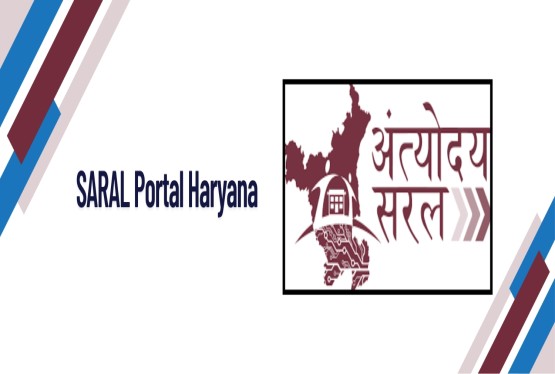On May 27, 2025, the Reserve Bank of India (RBI) made headlines by announcing an important change in the way Default Loss Guarantees (DLGs) will be treated in India’s financial system. This regulatory shift, effective September 30, 2025, signals a new chapter for digital lending, especially for partnerships between NBFCs (Non-Banking Financial Companies) and fintech platforms.
The new regulation clearly states that NBFCs can no longer consider any Default Loss Guarantees provided by Lending Service Providers (LSPs) or fintech partners when calculating provisions for stressed assets. This applies even to those DLG arrangements that were previously permitted under RBI’s earlier June 2023 guidelines, which had allowed up to 5% DLG coverage on loan portfolios. This decision reflects RBI’s commitment to strengthening prudential lending practices and ensuring that regulated entities fully bear the credit risks of the loans they disburse, regardless of any side arrangements with fintechs.
What is a Default Loss Guarantee (DLG)?
To understand the significance of this move, it’s important to first break down what a Default Loss Guarantee is. A DLG is essentially a contract where a third party, typically a fintech platform, agrees to cover part of the credit losses an NBFC might face on loans sourced or originated through that fintech’s platform.
This type of guarantee allows NBFCs to reduce the provisioning burden for possible loan defaults. In practice, fintech partners often offer these guarantees to NBFCs as a way to offset credit risk. It helps the fintechs onboard borrowers who might be considered riskier and makes NBFCs more comfortable lending digitally to a wider pool of customers.
By covering part of the potential loan losses, Default Loss Guarantees made it possible for NBFCs to expand their digital portfolios more aggressively. However, this created a situation where the NBFC—the regulated entity—wasn’t fully carrying the credit risk of the loans it issued, raising concerns for the RBI.
Why Did RBI Tighten the Norms on Default Loss Guarantees?
The decision by the RBI to tighten norms on Default Loss Guarantees was not made overnight. There are several key reasons behind this move, all focused on ensuring the health and stability of India’s financial ecosystem.
Restoring Full Credit Accountability to NBFCs
One of the main concerns was that financial institutions disbursing loans were not fully bearing the credit risk. Since fintechs are often unregulated or only lightly regulated, they could dictate lending terms while the NBFC formally issued the loan. The RBI Tightens Norms on Default Loss Guarantees to ensure that NBFCs remain the true risk owners, reinforcing their accountability.
This change means NBFCs will no longer have the cushion of a fintech partner promising to cover part of the losses. They must now take full responsibility for all loans, no matter how or where they originated.
Strengthening Transparency and Governance
Another reason for the update is to improve transparency. Many NBFC-fintech arrangements had unclear ownership of risk, especially when it came to stress testing, borrower communication, and default management. By removing the DLG from provisioning calculations, the RBI ensures that NBFCs must transparently assess, report, and manage all credit risks on their books.
The RBI’s move aligns with broader global regulatory trends where clarity in governance and risk ownership is essential for financial stability.
Preventing Regulatory Arbitrage
Finally, the RBI’s decision helps close loopholes in the system. Even though earlier guidelines capped DLGs at 5% of the loan portfolio, some market players used this framework as a compliance workaround to issue high-risk loans under the comfort of guarantees. By mandating that all loans be provisioned for uniformly—whether or not they come with a Default Loss Guarantee—the RBI shuts this door, reducing opportunities for regulatory arbitrage.
Impact on NBFCs: New Challenges and Responsibilities
The RBI Tightens Norms on Default Loss Guarantees, which has far-reaching implications for NBFCs. This is not just a technical compliance change—it fundamentally shifts how NBFCs approach their credit business, especially with fintech partners.
Increased Provisioning Costs
Without the comfort of DLG-backed risk sharing, NBFCs will now face higher provisioning costs, especially for loans sourced through fintech channels. Every rupee lent will need to be assessed under the NBFC’s internal risk models, with no credit given for third-party guarantees. This increases the overall cost of maintaining a digital loan portfolio.
Revaluation of Risk-Based Pricing Models
NBFCs will need to revisit their risk-based pricing models. Earlier, loans supported by Default Loss Guarantees could be priced more attractively, as the NBFC’s exposure was partially offset. Now, without that cushion, NBFCs will have to adjust pricing to reflect the full risk, which may lead to higher interest rates or stricter borrower terms.
Strengthening Borrower Vetting
NBFCs must improve their borrower vetting processes. Since they can no longer rely on fintechs to absorb part of the credit risk, the responsibility for thorough due diligence falls squarely on their shoulders. Stronger KYC, credit assessments, and risk profiling will become critical components of the lending process.
Enhanced Portfolio Monitoring
To avoid stress buildup in their loan books, NBFCs will need to invest more in portfolio monitoring tools and early-warning systems. Continuous tracking of fintech-sourced loans, just like in-house portfolios, is now essential to meet regulatory expectations.
Impact on FinTechs: Time to Pivot Business Models
The RBI Tightens Norms on Default Loss Guarantees, and fintech companies will feel the ripple effects. Many fintechs built their business models around providing DLGs to NBFC partners, helping push riskier borrowers into the formal lending system. That path now faces restrictions.
Shifting Toward Tech-Driven Underwriting
Fintechs will need to shift away from loss-guarantee-based models and invest more in technology-driven, data-centric underwriting systems. This includes better credit scoring, real-time KYC, and smart risk profiling, making the borrower onboarding process more strong and less reliant on guarantees.
Reconsidering Their Role in the Ecosystem
Fintech players will also need to reconsider their role: are they facilitators, pure technology partners, or co-lenders? With the RBI’s regulatory tightening, fintechs must realign their services to focus on enabling responsible, scalable, and fully compliant lending partnerships.
Aligning with Regulatory Vision
Ultimately, fintech companies will need to align with the RBI’s vision of a more prudent digital lending ecosystem. This means embracing innovation that supports, rather than circumvents, responsible lending practices.
What Should NBFCs Do Now?
With the compliance deadline of September 30, 2025, fast approaching, NBFCs have a limited but important window to prepare.
Audit Existing DLG-Based Arrangements
NBFCs should immediately review all existing Default Loss Guarantee arrangements. This audit will help them understand how the removal of DLG benefits impacts their provisioning requirements, capital planning, and risk exposure.
Strengthen Internal Underwriting Standards
Given that fintech-sourced loans must now be evaluated as rigorously as internally sourced ones, NBFCs need to upgrade their internal underwriting processes. This includes reassessing credit criteria, tightening approval processes, and ensuring independent risk assessment.
Engage with FinTech Partners
NBFCs should engage fintech partners to realign co-lending models, ensuring clear distribution of operational roles while retaining full risk ownership. This collaboration is critical to maintain healthy and compliant partnerships in the evolving digital lending space.
Explore Alternative Risk Mitigation Tools
While DLGs are off the table for provisioning, NBFCs can explore other credit risk mitigation tools, such as insurance-backed loan models, greater use of credit bureaus, and analytics-driven fraud detection systems. These alternatives can help safeguard portfolios without violating regulatory norms.
Step Toward Mature Digital Lending
The RBI Tightens Norms on Default Loss Guarantees not to stifle the growth of digital lending, but to ensure it matures into a stable, resilient sector. By enforcing full risk ownership on regulated entities, the RBI is reinforcing accountability in a landscape that has rapidly expanded through digital channels.
While there may be short-term pain for NBFCs—such as tighter capital buffers, adjustments in pricing, and renegotiation of fintech partnerships—the long-term benefits are substantial. A more accountable, transparent, and stable digital credit ecosystem will inspire greater confidence among investors, borrowers, and regulators alike.
Conclusion
The future of India’s digital lending sector lies in combining cutting-edge technology with robust credit practices. NBFCs that invest early in risk intelligence, fintech integration, and transparent provisioning will not only meet the demands of the RBI Tightens Norms on Default Loss Guarantees but will also position themselves to thrive in a more mature, regulated market.
For NBFCs, fintech founders, and investors navigating this shift, now is the time to act, adapt, and innovate within the guardrails of compliance. This strategic recalibration, though challenging, offers a clear path to long-term success in India’s dynamic financial landscape. If you are an NBFC, fintech player, or investor looking for insights or collaboration in this transitional phase, Compliance Calendar experts are available to share experiences and explore solutions. Together, we can help shape the future of digital credit in India—built not on shortcuts, but on strong foundations of accountability and innovation.
Email: info@ccoffice.in
Call/Whatsapp: +91 9988424211
FAQs
Q1. What are Default Loss Guarantees (DLGs) in NBFC-FinTech partnerships?
Ans. Default Loss Guarantees (DLGs) are contractual agreements where a third party—usually a fintech platform—promises to cover a portion of the loan losses that a Non-Banking Financial Company (NBFC) incurs on loans sourced or originated through that fintech. These guarantees help NBFCs reduce the credit risk on their digital portfolios, allowing them to expand lending to riskier borrower segments. However, under the new RBI norms, NBFCs must no longer factor DLGs into their provisioning calculations, meaning they must bear the full credit risk on their books.
Q2. Why did the RBI tighten norms on Default Loss Guarantees?
Ans. The RBI tightened the norms on Default Loss Guarantees to restore full credit accountability to NBFCs. The regulator believes that financial institutions lending money must fully absorb the associated credit risks, rather than shifting part of the burden to fintech partners. This change ensures transparency in risk ownership, eliminates regulatory loopholes, and strengthens the governance framework in India’s rapidly expanding digital lending sector.
Q3. How will the new RBI rule impact NBFCs?
Ans. The new RBI rule means NBFCs can no longer reduce their provisioning based on DLGs. As a result, they will face higher provisioning costs, need to reassess risk-based pricing models, and improve borrower vetting and portfolio monitoring. NBFCs must now apply the same level of risk scrutiny to fintech-sourced loans as they do to internally sourced ones. This change pushes NBFCs to strengthen internal risk management practices and reassess all fintech partnerships.
Q4. What changes should fintech companies make after the RBI’s update?
Ans. Fintech companies that previously relied on DLG-based partnerships must pivot their business models. They should invest in technology-driven, data-based underwriting, enhance borrower onboarding with robust KYC and credit scoring tools, and clarify their role as technology enablers or co-lenders. Fintechs must align with RBI’s vision of a responsible digital lending ecosystem, focusing on sustainable, scalable practices rather than offering loss guarantees to NBFCs.
Q5. What is the compliance deadline for NBFCs to adapt to the new DLG rules?
Ans. The compliance deadline set by the RBI for NBFCs to adapt to the new Default Loss Guarantee rules is September 30, 2025. By this date, NBFCs must ensure they are no longer factoring in DLGs from fintech or lending service providers when calculating provisions for stressed assets. This requires NBFCs to audit existing DLG arrangements, strengthen internal underwriting, and realign fintech partnerships to meet the new regulatory standards.
Q6. How can NBFCs mitigate credit risk without DLGs?
Ans. Without Default Loss Guarantees, NBFCs can explore alternative risk mitigation tools. These include using credit insurance-backed loan models, relying more on credit bureau data, adopting advanced analytics for fraud detection, and improving early-warning systems for stressed assets. Strengthening internal credit assessment processes and regularly monitoring borrower behavior are also crucial steps NBFCs can take to maintain portfolio quality under the new RBI framework.
Q7. Will the RBI’s move affect digital lending growth in India?
Ans. In the short term, the RBI’s decision to tighten norms on Default Loss Guarantees may slow down aggressive digital lending growth, as NBFCs recalibrate risk models and fintechs adjust business strategies. However, in the long term, this regulatory shift is expected to strengthen the digital lending ecosystem by promoting responsible lending, improving borrower confidence, and attracting more stable investments. A sound, compliant, and transparent credit system ultimately benefits all players in the financial ecosystem.












































































_crop10_thumb.jpg)







_Rules,_2025_learn_crop10_thumb.jpg)
























































































_crop10_thumb.jpg)








 in BIS FMCS_learn_crop10_thumb.jpg)










_crop10_thumb.jpg)















_crop10_thumb.jpg)





_Code C-888_learn_crop10_thumb.jpeg)
_learn_crop10_thumb.jpg)
































































_Certificate_learn_crop10_thumb.jpg)

_Certificate_(1)_crop10_thumb.jpg)















_learn_crop10_thumb.jpg)

_crop10_thumb.jpg)


















_Scheme_learn_crop10_thumb.jpg)


_learn_crop10_thumb.jpg)










